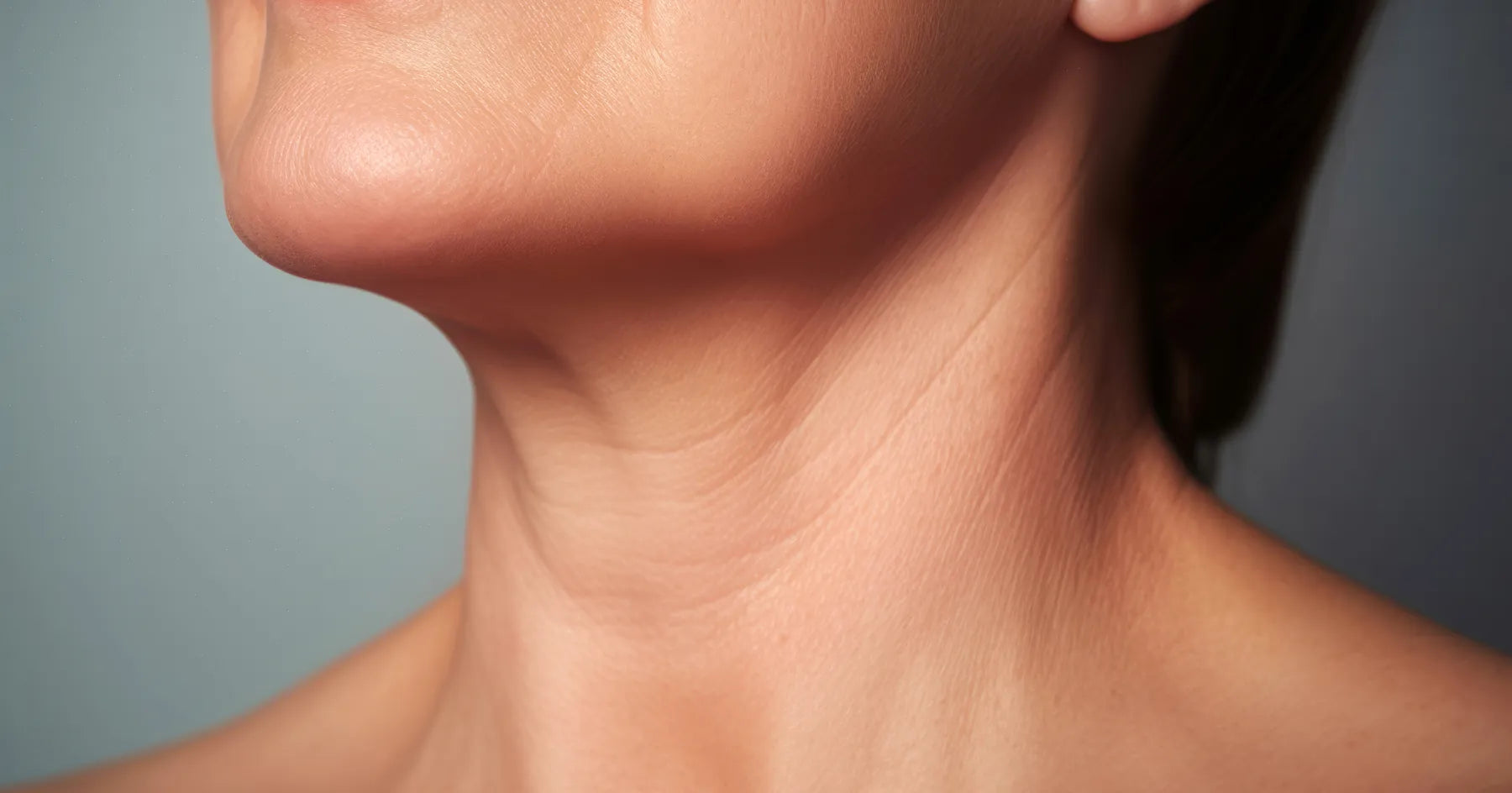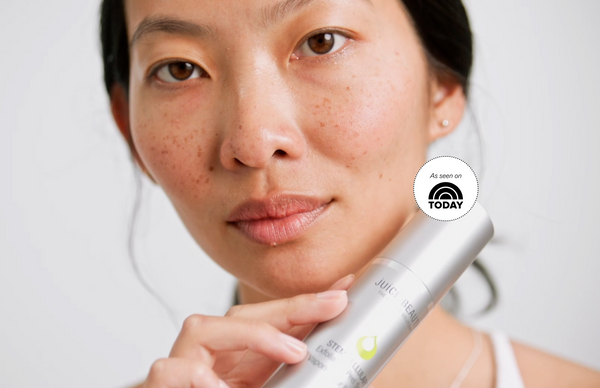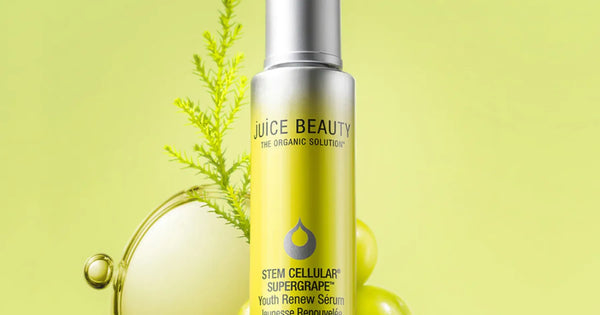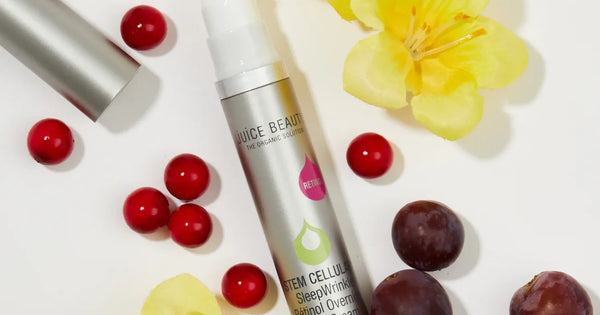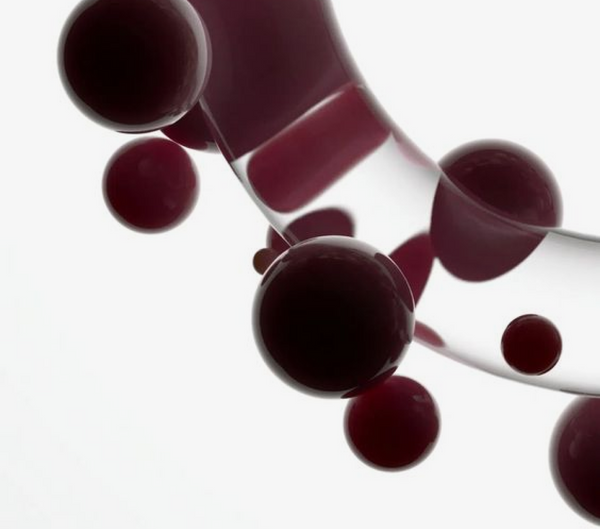What comes to mind when you think of wrinkles? You might think of crow's feet in your eye area or smile lines around your mouth. You might even frown lines on your forehead. Whatever you picture, you probably don’t immediately think of wrinkles on your neck.
Most skincare brands don’t pay attention to the skin below your jawline, but your neck deserves just as much care as the rest of your face. In fact, your décolleté (the part of your body that includes your neck and upper chest) is some of the most delicate skin you have.
Today, we’re going to give your neck and décolleté the attention it deserves. In this article, you’ll learn how to upgrade your skincare routine to achieve smooth skin and avoid neck wrinkles. Get ready for a soft, supple skin look from hairline to neckline.
Why Do You Get Neck Wrinkles?
Before you can learn how to get rid of neck wrinkles, you have to understand where they come from in the first place. Like the lines and creases that form on your face, neck wrinkles are the result of changes to the internal structure of your skin.
Your skin is made of three layers that protect your body:
- The top layer is the epidermis. This layer is responsible for keeping dangerous pollutants and other threats from entering your body via your skin’s moisture barrier.
- The middle layer is the dermis. It’s responsible for regulating fluid flow in the skin, including blood vessels, sweat glands, and sebaceous glands.
- The bottom layer is the hypodermis. It’s responsible for storing fat and energy to insulate your body, maintain your core temperature, and cushion the muscles and bones beneath.
However, your dermis has a secondary role. In addition to supporting fluid flow throughout your body, it’s also responsible for maintaining the structure of your skin.
Think of your dermis as the internal foundation of your skin. It contains proteins like collagen and elastin that stretch from the hypodermis to the epidermis. These are the support beams. When these structural proteins are strong, your skin is supple and taut. However, if they fail, your skin can start to collapse in on itself.
Wrinkles are the result of this collapse. Your body naturally starts to produce less collagen and elastin as you age, which means the middle layer of your skin grows weaker and weaker as time goes on.
When this happens to the skin in your décolleté, you can develop neck wrinkles.
4 Common Causes of Neck Wrinkles
You know what’s happening beneath the surfaces that causes wrinkles and fine lines to form on your neck. But how does that translate into real-world reasons?
There are a number of circumstances that can cause collagen and elastin to deteriorate in the skin and lead to neck wrinkles. Let’s go through the four most common ones.
1. Natural Aging
We mentioned it already, but it’s worth saying again. The most common cause of neck wrinkles is the natural aging process.
Healthy and youthful skin contains up to 75% collagen. However, when you look at the amount of collagen in equally healthy but much more mature skin, this percentage can be cut in half. As structural proteins break down in the skin, your skin loses the integrity it needs to remain supple and flexible. In other words, it starts to sag and wrinkle.
2. Sun Exposure
There’s another type of aging that might be the cause of your neck wrinkles: photoaging.
Photoaging describes the long-term effect of sun damage on your skin. This damage can appear as dark spots (or age spots), uneven skin textures, and the onset of premature wrinkles.
When you forget to wear sunscreen on your neck or expose it to the elements over several seasons, UV radiation can start to break down the collagen and elastin in your skin, which begins the chain reaction, causing the wrinkles in your neck and décolleté.
3. Poor Posture
Another common cause of neck wrinkles is poor posture.
When you curve your shoulders and angle your head down, you create a bend in your neck that applies pressure on the skin and muscles beneath.
The repetitive motion of looking down for long hours at a time (ever heard of “tech neck” from looking at a screen?) can physically break collagen and elastin fibers in the skin, deteriorating the internal structure. This limp skin is what turns a temporary fold when looking down into long-lasting wrinkles.
4. Genetics
Besides natural aging, there’s one other factor that is by far the most common cause of neck wrinkles. That factor is genetics.
Wrinkles are, unfortunately, hereditary. In fact, 60% of signs of skin aging are caused by genetic factors.
Some people just naturally produce less collagen and elastin than others, and if your genes happen to make you one of them, that means your skin is more vulnerable to developing fine lines and wrinkles earlier in life.
How To Get Rid of Neck Wrinkles
Depending on what’s causing your neck wrinkles, you can get rid of them by stopping the wrinkle-inducing activity. (We’re looking at you, poor posture.) However, if your neck wrinkles are beyond your control, the best way to correct them is with the power of science.
That’s right. We’re talking about skincare.
Here at Juice Beauty, we take neck wrinkles seriously. That’s why we’ve designed a number of serums and creams specifically to treat the skin of your neck and décolleté. We’ve put two powerful ingredients to work to smooth away your neck wrinkles.
Stem Cells
The first ingredient we use to address the look of neck wrinkles is fruit stem cells.
Stem cells are a type of organic cell that has not yet grown into their final form. Normally, cells are specialized for a specific function in your body. For example, they might develop into a blood cell, which is different than a tissue cell or an immune cell.
However, stem cells are unspecialized, meaning they’re full of untapped potential. They can become any type of cell, making them masters at cellular repair in your body.
Our STEM CELLULAR® Peptide Lifting Neck Cream uses stem cells from fruits to repair damaged collagen and elastin fibers in the dermis layer and support a tighter, firmer skin look.
But don’t just take our word for it. Our Peptide Lifting Neck Cream showed significant visual improvement after just four weeks when tested in clinical studies. By strengthening the structure of your skin, stem cells can visibly smooth away fine lines and wrinkles in the neck area.
Signal Peptides
Another key ingredient we use to manage neck wrinkles is signal peptides.
Signal peptides are very short peptide chains that are used to send messages to and from different structures in your cells.
Unlike longer peptide chains that link up to form essential proteins and muscle tissues, signal peptides rarely leave their home cell — but that doesn’t make them less powerful.
In fact, the messages signal peptides send are what allow longer proteins to do their jobs. By supporting signal peptides, you support the function of the entire skin organ.
Our SIGNAL PEPTIDES™ skincare line uses these small but mighty peptide chains to strengthen skin and visibly firm your neck and décolleté. Signal Peptides Firming Serum restores firmness and skin elasticity, with 91% of clinical study participants reporting firmer skin and 97% reporting smoother skin.
Plus, Signal Peptides Firming Balm and Mask transforms dry, sagging skin into a hydrated, supple surface.
Support Your Skin for a Smooth, Wrinkle-Free Neck
Neck wrinkles are a common skin concern, but that doesn’t mean they have to be a lasting one. For smoother, more supple skin on your neck and décolleté, all you have to do is fuel your skin with the right ingredients.
Stem cells and signal peptides are some of the best ways to support the internal structure of your skin and stimulate collagen and elastin production to smooth away neck wrinkles. When you expand your skincare routine to include the delicate skin of your neck, you can achieve supple skin, from hairline to neckline.
Sources:
Anatomy, Skin (Integument), Epidermis | National Library of Medicine
Histology, Dermis | National Library of Medicine
Decreased Collagen Production in Chronologically Aged Skin | National Library of Medicine
Photoaging: What You Need to Know About the Other Kind of Aging | The Skin Cancer Foundation
Skin aging as a mechanical phenomenon: The main weak links | National Library of Medicine
Are Wrinkles Hereditary? | Easton Dermatology Associates Dermatologists
